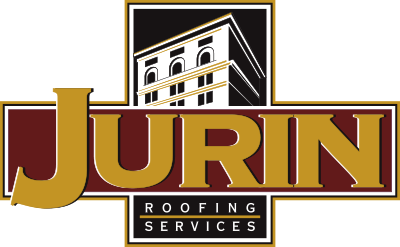One of the biggest hurdles we find when working with clients on roof replacement options is roof installation costs. Followed closely behind that is the desire for a quality product.
Like anything else you purchase, nobody wants to pay more than they absolutely have to while still receiving a high quality product.
Well we’d like to introduce you to the RhinoBond method as a way we can help reduce your roof installation costs without compromising the quality of the final product.
Why Choose the RhinoBond Roof System?
The RhinoBond system is essentially a hybrid method of attachment between an adhered system (glues and adhesives) and a traditional mechanically fastened system (plates and screws).
The plates used in conjunction with the fasteners to install the substrate have a special coating that can be welded to TPO and PVC membranes. This method can significantly reduce roof installation costs.
And since the RhinoBond system also uses 25% to 50% fewer fasteners than traditional mechanically fastened systems, you’ll be saving on material costs as well as labor.
If you’re not familiar with the installation methods of an adhered or mechanically fastened system, below is a quick overview.
Adhered Roofing Systems
Adhered roofing systems use glue or foam adhesives to secure the membrane to the substrate. The advantage here is that there is contact throughout the system. The problem is the expense created by the amount of time it takes to glue the sheet.
Mechanically Fastened Roofing Systems
Mechanically fastened roofing systems require fasteners to be installed every 12 inches in all the seam plus enhancements at the perimeters. The large numbers of fasteners creates material costs and increases hours for the installation.
3 Reasons to Choose the RhinoBond Roof System
Reason #1 – Decreased Labor and Material Costs
With the RhinoBond System we can decrease the number of fasteners required to install the membrane and therefore reduce the hours and material costs.
Other advantages include FM approval, simple perimeter enhancements when required, no odors since most of the glues are eliminated and manufacturer warranties are still obtained after the installation is completed.
Reason #2 – Enhanced Roof System Uplift Strength
As a “hybrid” roof system, the RhinoBond method also eliminates the “sheet flutter” that is sometimes an issue in traditional mechanically fastened roof systems.
This is because the sheet now has more contact points instead of only being fastened in the seams.
This also dissipates the stress load created by wind so all that force doesn’t go to just the seams.
The RhinoBond attachment system is a Factory Mutual approved system that offers superior wind uplift performance.
Reason #3 – Lower Chance of Roof Leaks
RhinoBond’s insulation and membrane attachment system that secures the membrane to the insulation without penetrating the roofing material. This system creates a more waterproof system that does not create any point of entry for moisture and fewer seams.
This system also eliminates the need for half sheets around the perimeter of the roof necessary for wind uplift protection required for other systems. With the RhinoBond system, a tighter fastening pattern is used in these areas providing enhanced wind uplift protection with fewer seams.
Put Your Roofing Contractor To The Test
When it comes time to invest in a new roof don’t be afraid to ask your roofing contractor questions. If your roofing contractor won’t take the time to educate you and listen to your questions, it may be time to seek out another professional.
I try and find the best solution for each project and quite often I can help save some money with a design such as the RhinoBond System. Finding the right contractor with the right solution can make a big difference in the years to come.








